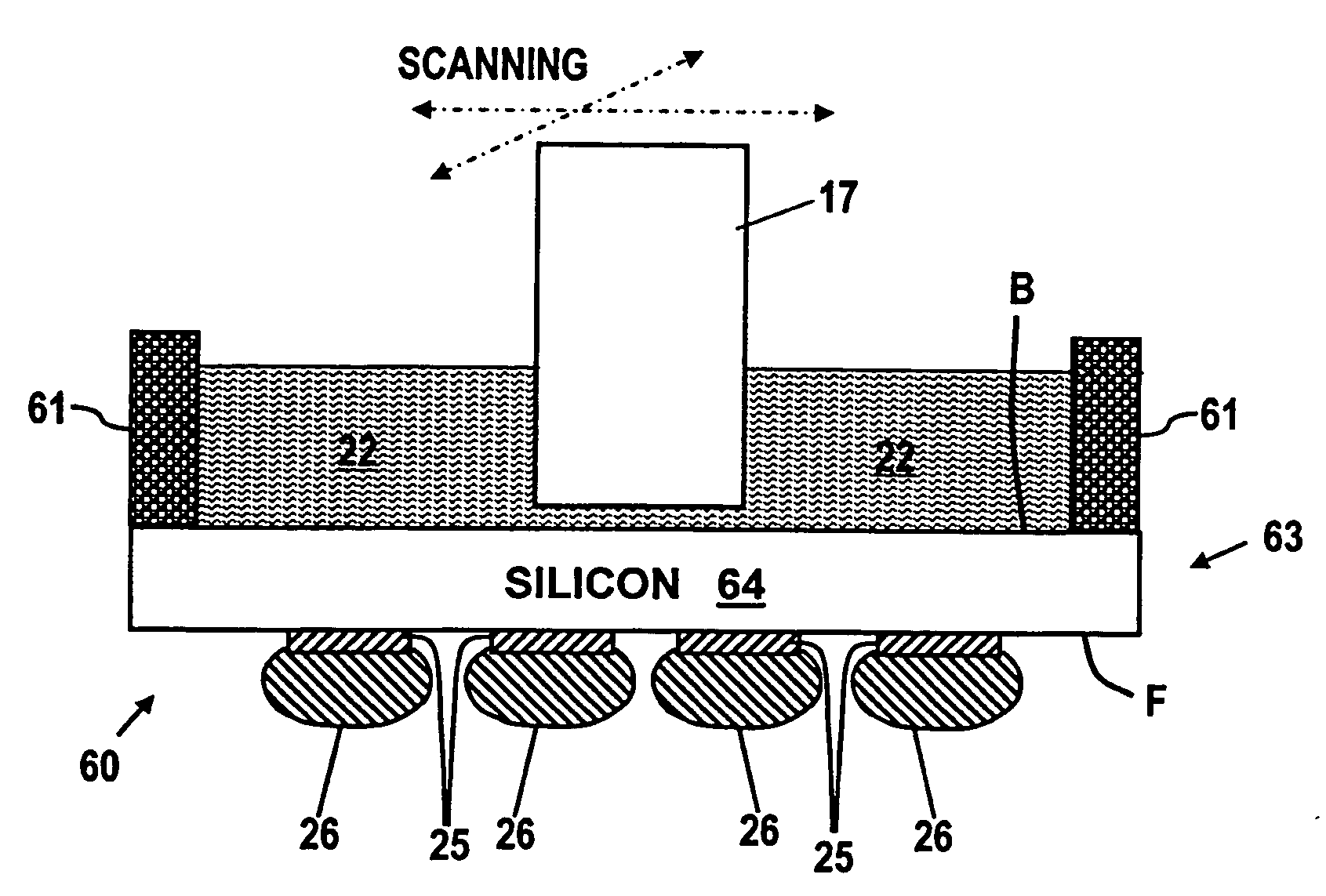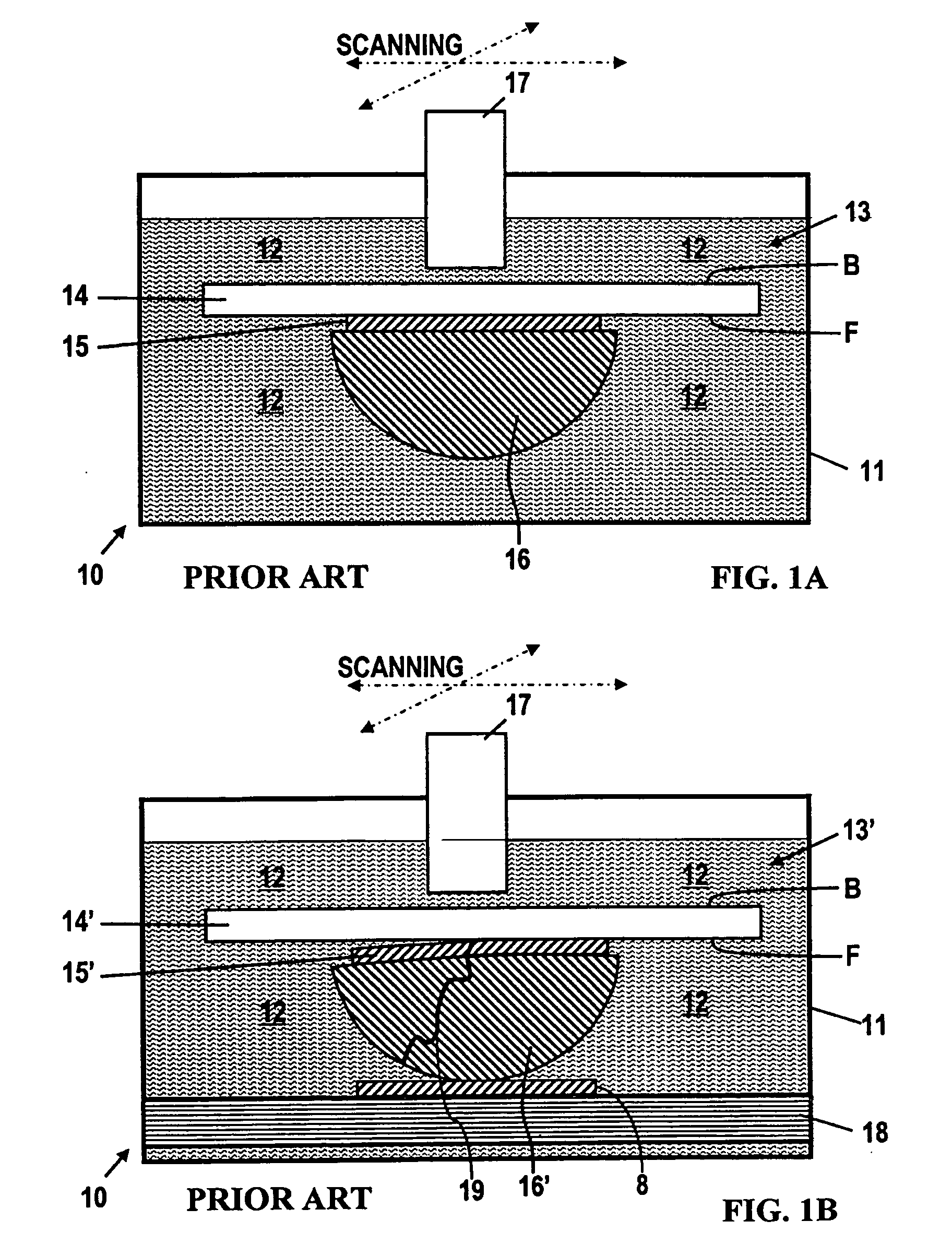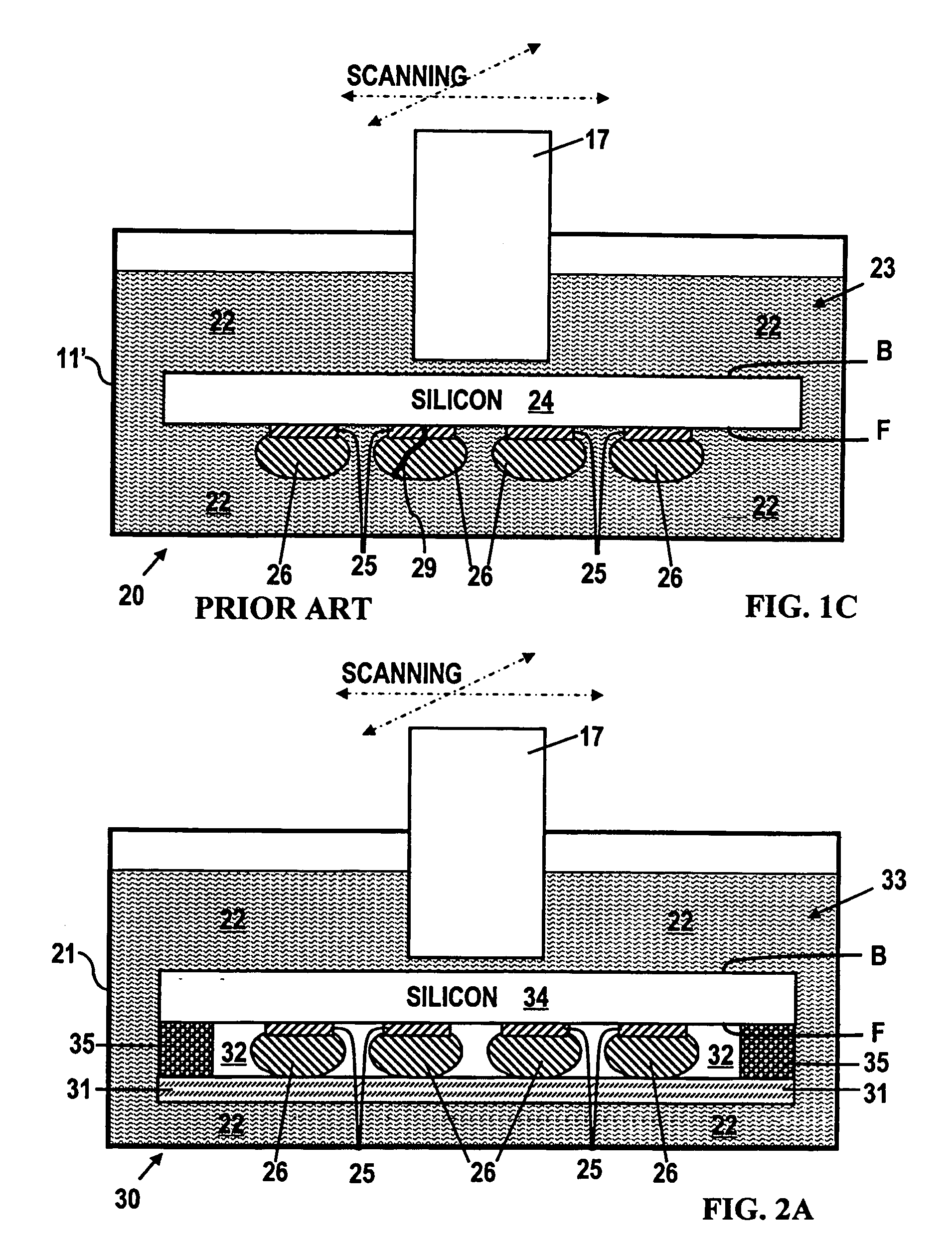Imaging thin film structures by scanning acoustic microscopy
a thin film structure and scanning acoustic microscopy technology, applied in the direction of instruments, specific gravity measurement, measurement devices, etc., can solve the problems of increasing the difficulty in non-destructively differentiating features of multi-layer structures, poor z-direction resolution of x-ray imaging, and increasing the demand for enhanced spatial resolution
- Summary
- Abstract
- Description
- Claims
- Application Information
AI Technical Summary
Benefits of technology
Problems solved by technology
Method used
Image
Examples
first embodiment
[0052]FIG. 2A is an illustration of sample setup in accordance with the present invention wherein C-SAM acoustic microscopy is performed by immersion of a Device Under Test (DUT) 33 in water 22 to couple of acoustic energy to the back surface B of the device 33 while isolating the front portion F of the device 33 including multiple C4 solder bumps 26 bonded to multiple BLM pads 25 in a, sealed, dry 32 protected from the water 22 in which the device 33 is immersed with a solid plate 31 and a gasket 35 sealed to the C4 solder bump (front) side F of the device 33 to maintain the BLM pads and C4 solder bumps enveloped in environment of air in chamber 32.
[0053]In particular, in FIG. 2A an acoustic microscope is employed in a configuration in accordance with this invention comprising a C-SAM testing arrangement 30 including a tank 21 filled with water 22. The testing apparatus shown in FIG. 2A is provided for testing a device 33 which includes a silicon wafer 34. The device 33 is immersed...
second embodiment
[0057]FIG. 2B is an illustration of a modification of the sample setup in FIG. 2A in accordance with the present invention, wherein multiple BLM pads 25 and multiple C4 solder bumps 26 are isolated in a dry environment within a sealed enclosure 42. In other words, the C4 solder bumps 26 and BLM pads 25 are isolated from the water 22. The sealed enclosure 42 is evacuated through a vacuum line 47 connected to the sealed enclosure 42. In FIG. 2B the seal to the front surface F of the silicon, semiconductor wafer 44 is retained in place by a vacuum chuck so the solder bumps 26 and BLM pads 25 remain in vacuum, isolated from water 22, during scanning. Sound waves are substantially blocked from being transmitted by the very high impedance of a partial vacuum, and are substantially completely reflected back to the interface.
[0058]The provision of a vacuum within the enclosure 42 is an improvement over the air provided in FIG. 2A, because the higher impedance of the vacuum will transmit alm...
third embodiment
[0062]FIG. 2C is an illustration of sample setup in accordance with the present invention wherein C-SAM acoustic microscopy is performed by partial immersion of a device 63. That is achieved by forming a dam retaining a sufficient depth of water 22 above the back surface B of a device 63 to couple of acoustic energy from the bottom end of the SAM probe 17 to the back surface B of the device 63. The inverted front surface F of the device 63 (including the multiple BLM pads 25 which are bonded to multiple C4 solder bumps 26) is located in a dry, open air environment isolated from the water 22. In summary, in FIG. 2C, the dam 61, and the back B of the substrate 64 included in the device 63 form a container above the substrate 64 wherein water 22 is confined.
[0063]The water 22 is deep enough to covers the bottom end of the transducer 17. The dam 61 comprises an impervious, physical barrier 61 on the periphery of the back surface B of the substrate 64. The physical barrier 61 may compris...
PUM
| Property | Measurement | Unit |
|---|---|---|
| frequencies | aaaaa | aaaaa |
| thickness | aaaaa | aaaaa |
| thickness | aaaaa | aaaaa |
Abstract
Description
Claims
Application Information
 Login to View More
Login to View More - R&D
- Intellectual Property
- Life Sciences
- Materials
- Tech Scout
- Unparalleled Data Quality
- Higher Quality Content
- 60% Fewer Hallucinations
Browse by: Latest US Patents, China's latest patents, Technical Efficacy Thesaurus, Application Domain, Technology Topic, Popular Technical Reports.
© 2025 PatSnap. All rights reserved.Legal|Privacy policy|Modern Slavery Act Transparency Statement|Sitemap|About US| Contact US: help@patsnap.com



